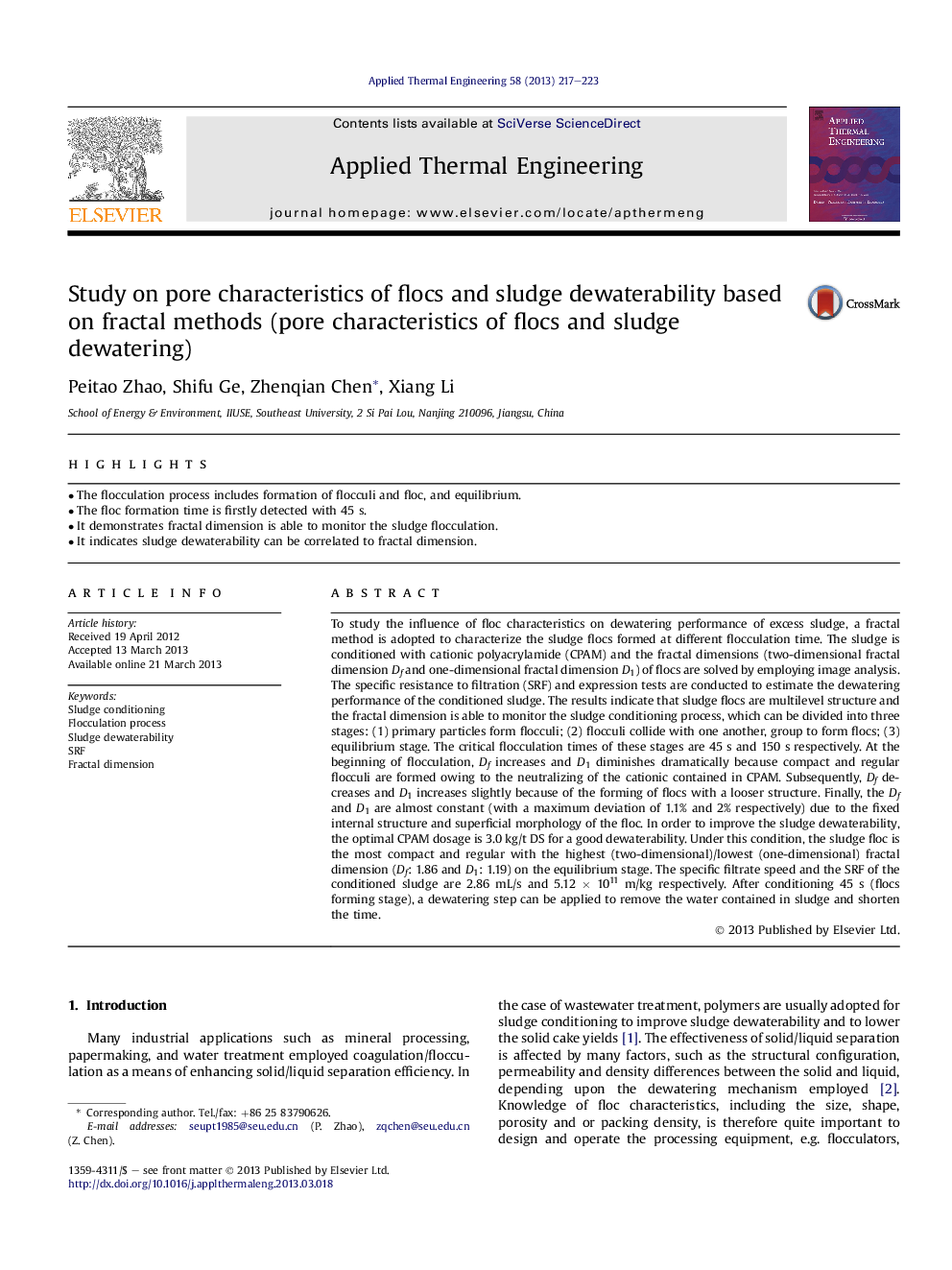| Article ID | Journal | Published Year | Pages | File Type |
|---|---|---|---|---|
| 646800 | Applied Thermal Engineering | 2013 | 7 Pages |
•The flocculation process includes formation of flocculi and floc, and equilibrium.•The floc formation time is firstly detected with 45 s.•It demonstrates fractal dimension is able to monitor the sludge flocculation.•It indicates sludge dewaterability can be correlated to fractal dimension.
To study the influence of floc characteristics on dewatering performance of excess sludge, a fractal method is adopted to characterize the sludge flocs formed at different flocculation time. The sludge is conditioned with cationic polyacrylamide (CPAM) and the fractal dimensions (two-dimensional fractal dimension Df and one-dimensional fractal dimension D1) of flocs are solved by employing image analysis. The specific resistance to filtration (SRF) and expression tests are conducted to estimate the dewatering performance of the conditioned sludge. The results indicate that sludge flocs are multilevel structure and the fractal dimension is able to monitor the sludge conditioning process, which can be divided into three stages: (1) primary particles form flocculi; (2) flocculi collide with one another, group to form flocs; (3) equilibrium stage. The critical flocculation times of these stages are 45 s and 150 s respectively. At the beginning of flocculation, Df increases and D1 diminishes dramatically because compact and regular flocculi are formed owing to the neutralizing of the cationic contained in CPAM. Subsequently, Df decreases and D1 increases slightly because of the forming of flocs with a looser structure. Finally, the Df and D1 are almost constant (with a maximum deviation of 1.1% and 2% respectively) due to the fixed internal structure and superficial morphology of the floc. In order to improve the sludge dewaterability, the optimal CPAM dosage is 3.0 kg/t DS for a good dewaterability. Under this condition, the sludge floc is the most compact and regular with the highest (two-dimensional)/lowest (one-dimensional) fractal dimension (Df: 1.86 and D1: 1.19) on the equilibrium stage. The specific filtrate speed and the SRF of the conditioned sludge are 2.86 mL/s and 5.12 × 1011 m/kg respectively. After conditioning 45 s (flocs forming stage), a dewatering step can be applied to remove the water contained in sludge and shorten the time.
